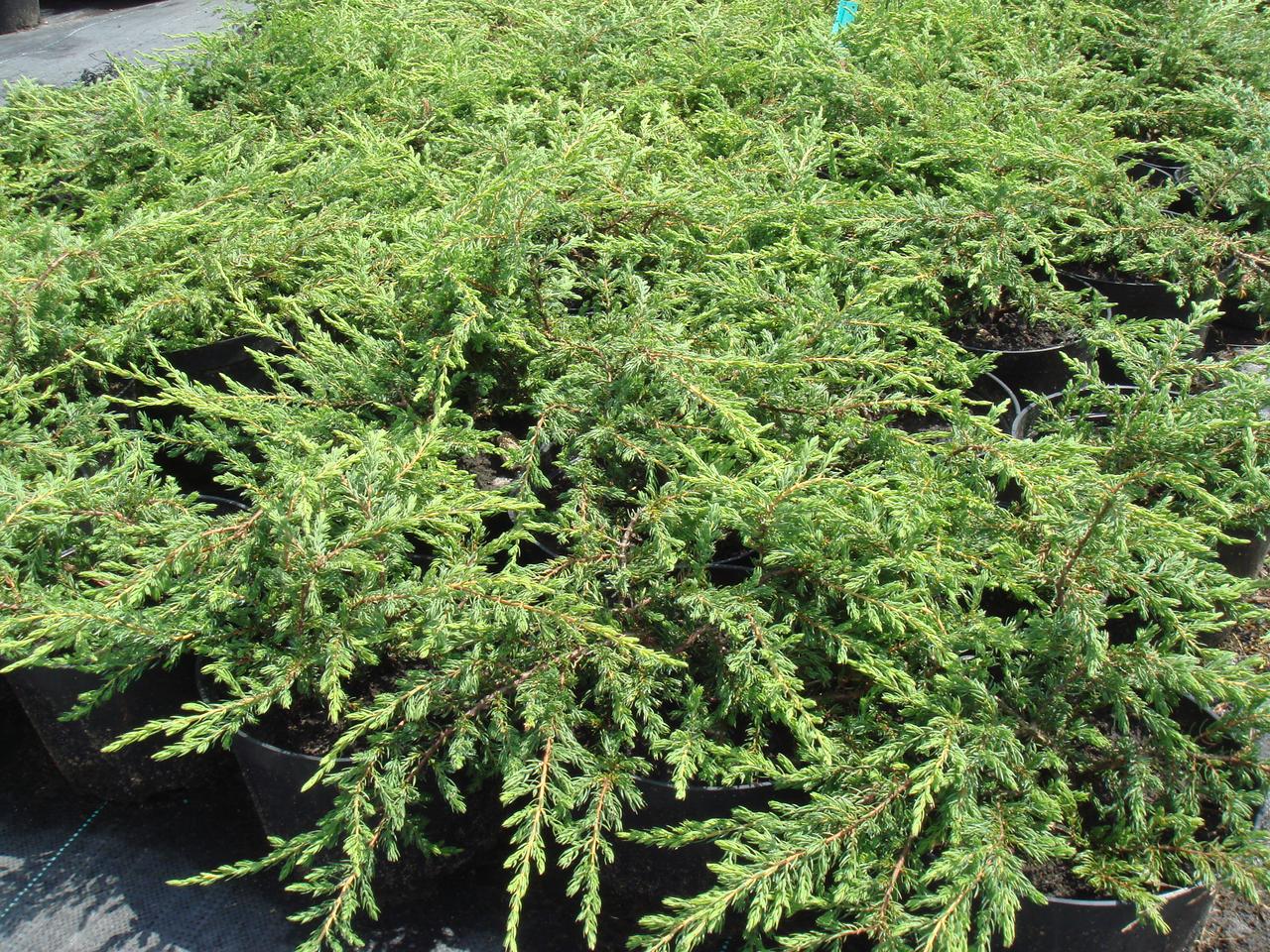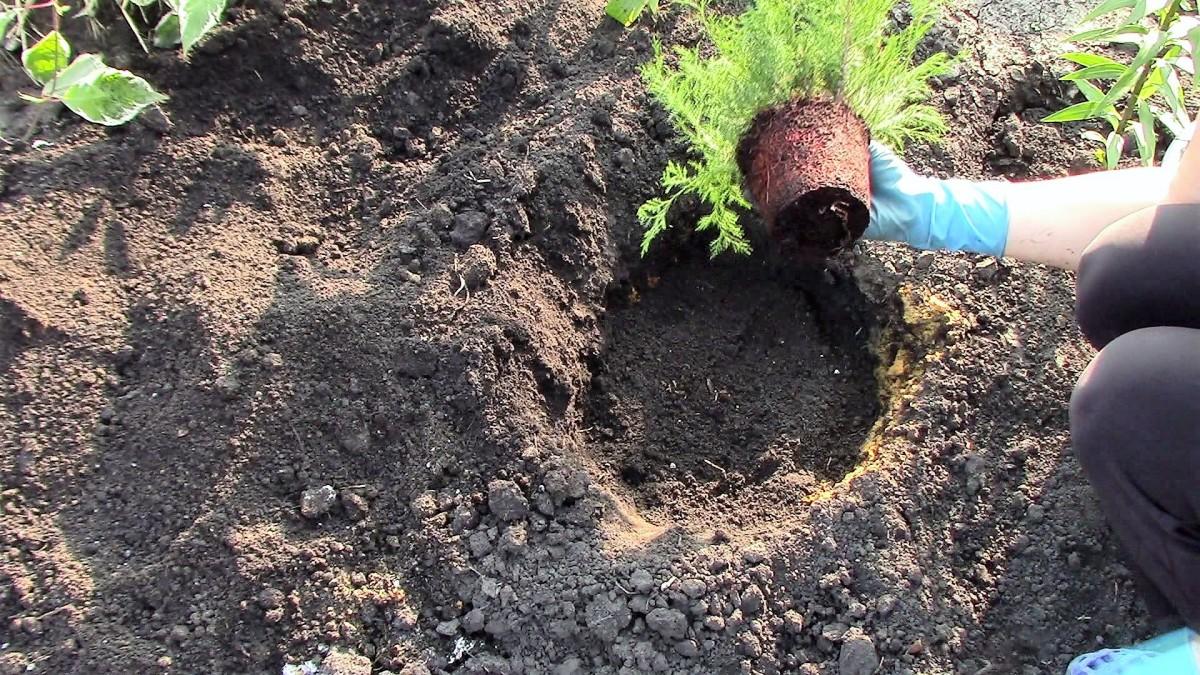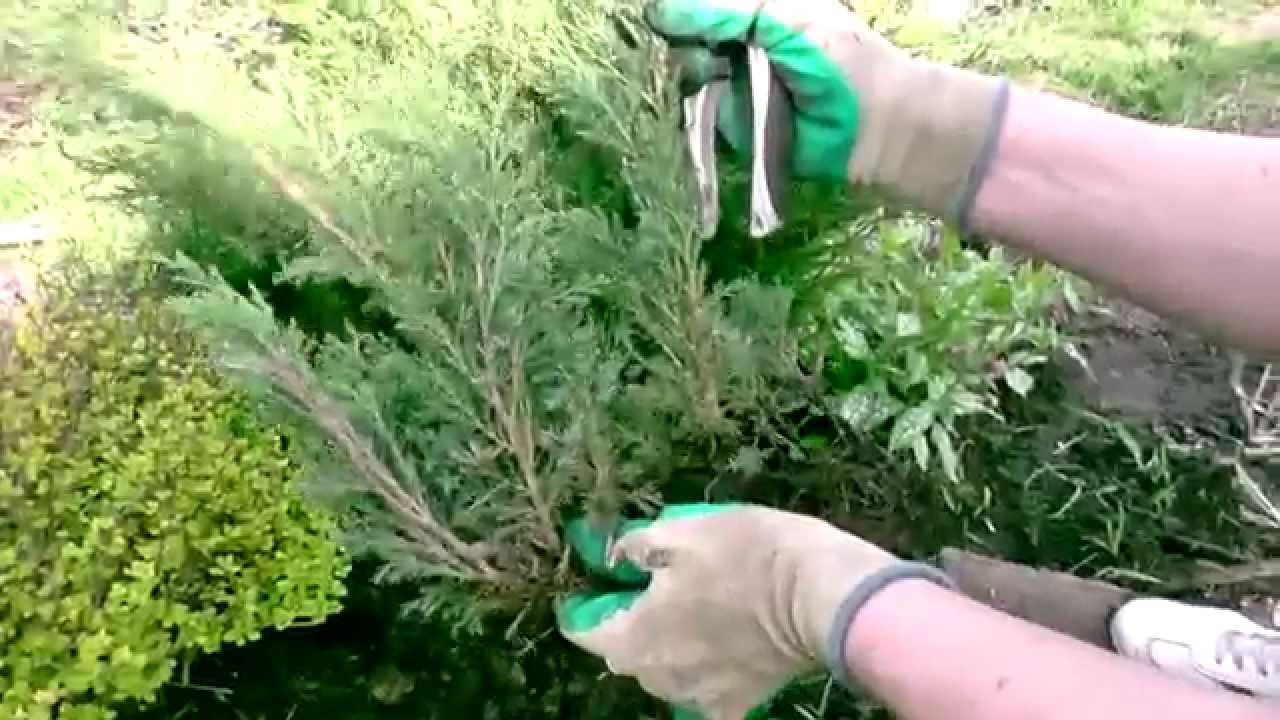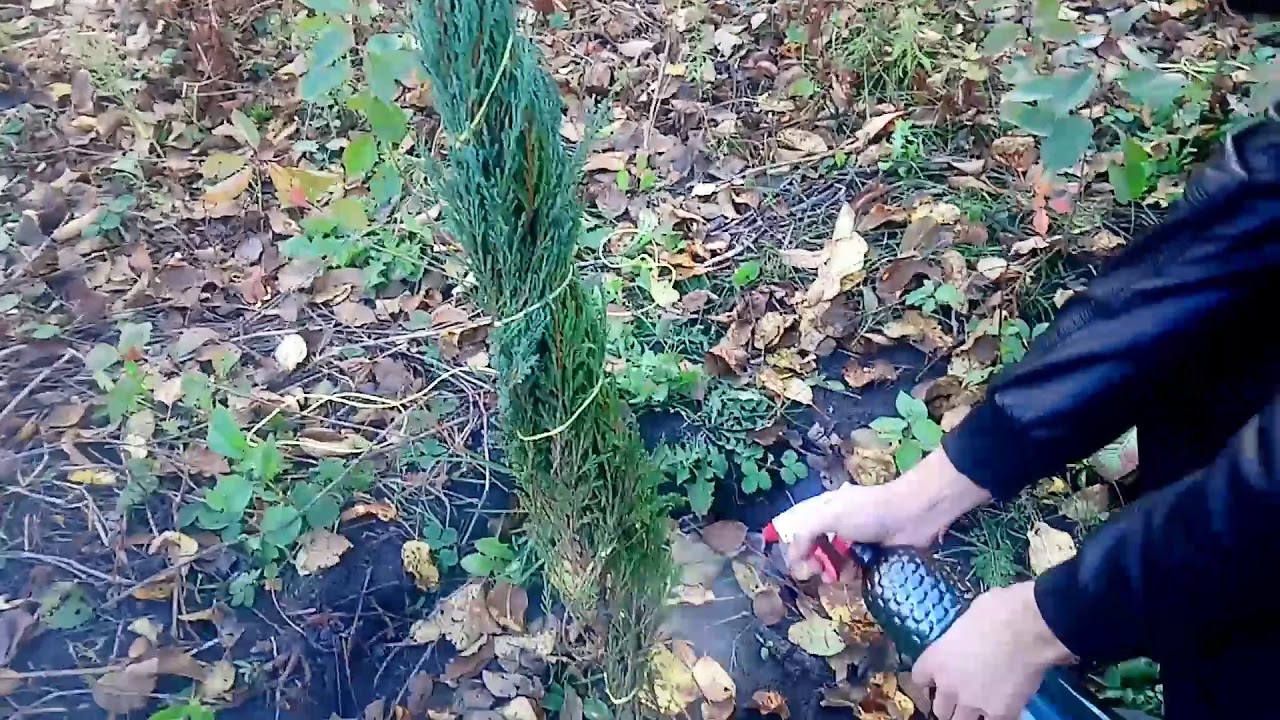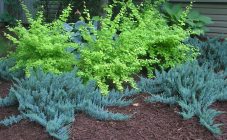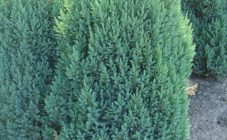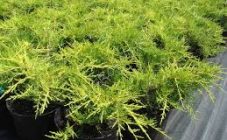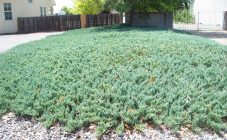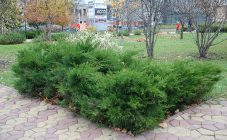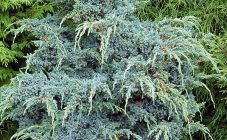Content:
Juniper Repanda, or creeping, is a shrub used for landscaping garden and summer cottages. Has gained popularity in landscaping for its ability to form beautiful creeping carpets. The plant is resistant to winter conditions and easy to care for. Readers will be interested to know the merits of the Repanda juniper, the description of the variety and the features of caring for it.
Characteristic features of a juniper
The variety is well tested by time, resistant to cold and other adverse environmental conditions. Reproduces well vegetatively.
The plant has high decorative characteristics. It is best suited for creating whimsical designs. It is completely unsuitable for creating hedges.
Juniper is able to withstand frosts up to 30 degrees, without the use of shelter.
Description of the juniper Repanda
The Repanda variety was bred in Ireland in 1934. Since then, it has enjoyed well-deserved attention all over the world. Unlike common juniper, the description of the Repanda variety is slightly different.
First, it is a rather slow growing species. The plant grows no more than 10-30 cm per year. Its growth goes evenly horizontally in all directions, and not in height. Studies conducted in the regions of central Russia indicate that the tree rarely reaches 2.5 m in diameter, even under optimal growing conditions.
The crown of this shrub is prone to pronounced branching. Interestingly, the color of the needles of this plant changes, depending on the season. So, in summer it is bright green, in winter it becomes dark green, with a brown tint.
The bark of the plant is reddish-brown, in old trees it is brown. The needles are collected in whorls of several pieces each. Has a pleasant juniper scent.
Juniper is a dioecious plant. Female buds are usually very aromatic and have a spicy taste. Their diameter is from 5 to 10 mm. Oval shape, green color. Male cones look like long spikelets of a bright yellow hue. They are located in the axils of the leaves. In the second year, these cones have seeds that are closed into scales.
Landing
Juniper Repanda is undemanding to the composition of the soil. The shrub thrives on alkaline and slightly acidic soils. The most comfortable soil for a plant is loose and well-moistened.
It is best to plant junipers in the spring.
Before planting, prepare a mixture of:
- turf land;
- peat;
- sand;
- complex fertilizer for conifers.
To prevent the roots from rotting, you must first prepare a place for planting the plant. For this purpose, a drainage layer is placed at the bottom of the hole, about 70 cm deep (its thickness is about 20 cm). The drainage layer contains broken brick and expanded clay.
If you plan to create a living border, then a distance is left between the bushes sufficient for the crowns to close.
When planting, it is very important not to bury the root. The plant must be mulched with a layer of up to 7 cm. Peat and sawdust are used as mulch. After planting a shrub, it must be watered abundantly with water for a week.
The right place for planting juniper makes it easier to care for it. For the plant to grow well, you should plant it on the sunny side or in partial shade, from the south. It is desirable that the water table is low.
Planting from seeds
Planting material can be harvested during the period when the berries darken. If you collect the seeds after the berries have darkened, they will take a long time to sprout.
After collecting seeds, stratification must be carried out. To this end, take a box, fill it with a wet mixture of sand, peat, moss. Seeds are placed in it. From above they are covered with another layer of the mixture. For the winter, the boxes must be taken outside and left in the cold for 5 months. During this time, the seeds are hardened, which ensures faster germination.
In May, stratified seeds are removed and planted in a garden bed. You need to take care of them in the same way as for other plants: water, loosen the soil, weed. The seedlings are then transferred to a permanent location.
Cuttings
In this way, it is very good to propagate the Repanda juniper. In spring, young branches are cut from the most beautiful and largest tree. The size of the cutting should be about 10 cm. The planting material must be cleaned of needles, placed in a solution that promotes intensive root formation.
Then the cutting is placed in sand or peat mixture. The substrate must be moistened, covered with foil and left to form roots. This process should take place in a dark place.
Such an artificial greenhouse must be periodically opened for the purpose of airing. The substrate must be constantly moistened. Under favorable conditions, the roots are formed in a month and a half. Only after successful root formation, cuttings are planted in open soil. Young plants should be covered with spruce and pine branches for the winter so that they do not freeze.
Plant care
In order for a shrub to grow beautiful, it must be properly looked after.
Watering and feeding
Fertilizers are applied once a year. For normal development of plants, nitroamofoska or universal fertilizer for conifers is applied.
The plant compensates for the lack of soil moisture with high air humidity. In the heat, the juniper must be watered. This should be done in the evening. The shrub does not tolerate dry air, so watering is best done by sprinkling.
Pruning
This creeping juniper does not need pruning. The plant independently forms a beautiful rounded crown shape.
In the spring, you need to remove dead and damaged branches. For the cultivation of juniper, spring is the best time of the year. To get cuttings, you need to dig in the layers. By the fall, they take root and become full-fledged seedlings.
Spring care
Since the end of February, the activity of the sun has gradually increased. When the snow begins to melt, a dangerous period sets in for all types of juniper, including Repanda. The active sun can burn the needles. To prevent this from happening, you should carefully shade the juniper. The best material for this is burlap, thin fabric.
When the snow has completely melted, the cover material is removed. The near-trunk area is cleared of foliage. Mulch is removed because its layer leads to rotting of the root system.
The soil is dug up or loosened up in the spring. When it is dry, it is recommended to place a new layer of mulch.
Diseases, pests
Juniper Repanda can suffer from such diseases:
- Rust. It manifests itself in a change in the color of the needles. The reason for the appearance is animal feces and a high concentration of salts in the soil.
- The yellowing of the needles occurs with an excess or lack of moisture.
- The appearance of red growths on the branches indicates a fungal infection of the juniper.
- With the Schütte mushroom, the color of the needles changes to orange. Then growths appear on it. Weak plants are most at risk of getting sick.
- Drying of the bark and branches is triggered by fungi, which cause the growth of warts and longitudinal ulcers.
Juniper can be infected with such pests:
- Aphid. To get rid of it, you need to take measures to destroy ants. They are affected by insecticides: Aktara, Decis, Fufanon.
- Active reproduction of scale insects leads to the curvature of the shoots, the death of the bark. They are collected by hand, destroyed with the same insecticides that are used to fight ants.
- The spider mite gradually covers the entire tree with a thin web. You can get rid of it by periodically irrigating the plant with cold water. The tick is destroyed by Vermithek, Fufanon, Fitoverm.
Landscape
Juniper Repanda will be an excellent choice for landscape design:
- decoration of rock gardens, rocky areas, paths;
- filling spacious places;
- landscaping of slopes and uneven terrain (in the latter case, it helps prevent soil subsidence);
- masking uneven terrain;
- decoration and landscaping of balconies, flat roofs, terraces, entrances to the premises;
- decoration of parks and squares.
Common juniper Repanda is a beautiful evergreen shrub. Caring for him is simple and consists of regular watering, mulching, protection from pests. With this shrub, you can create great compositions in the garden.
